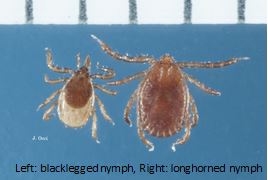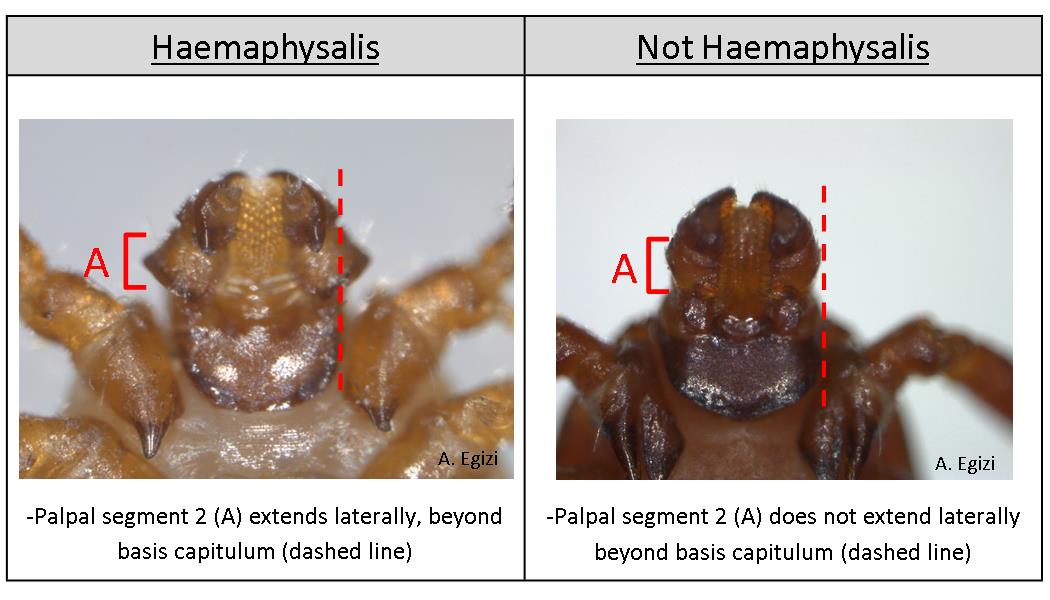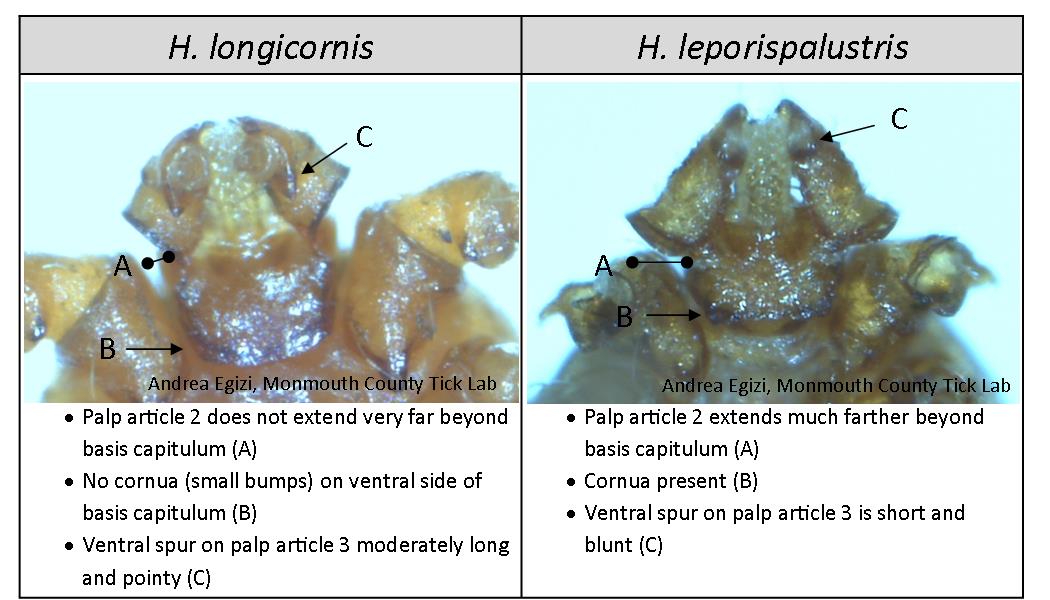
New in 2019: download a pictorial key to identify Haemaphysalis sp. created by a Rutgers CVB-led tea
As explained on the Tick ID Page, don’t go by size or by color. Just like other species (including humans!) can have lots of variation within a species, ticks can too.
The easiest way to recognize a longhorned tick is by examining its mouthparts, which are most clearly visible under a microscope.
Step 1. How to tell if a tick is in the genus Haemaphysalis
Unlike other genera of ticks (Ixodes, Amblyomma, Dermacentor) only ticks in the genus Haemaphysalis have palps that flare out to the sides (beyond the basis capitulum).

Step 2. Recognizing native vs. exotic Haemaphysalis
The rabbit tick, Haemaphysalis leporispalustris is a species native to NJ. It is somewhat unusual to encounter questing rabbit ticks by flagging but they are commonly found attached to rabbits.
Major differences between H. longicornis and H. leporispalustris are outlined below.

